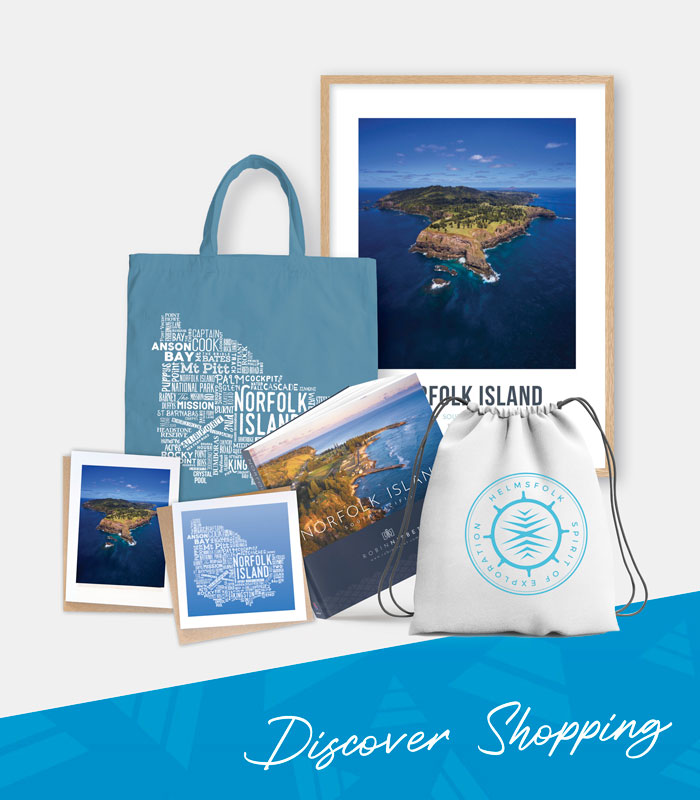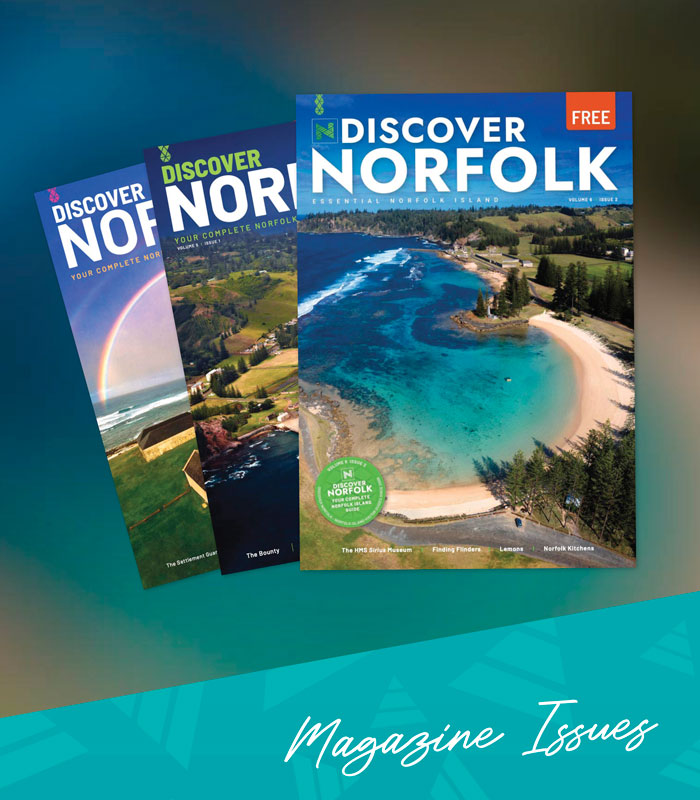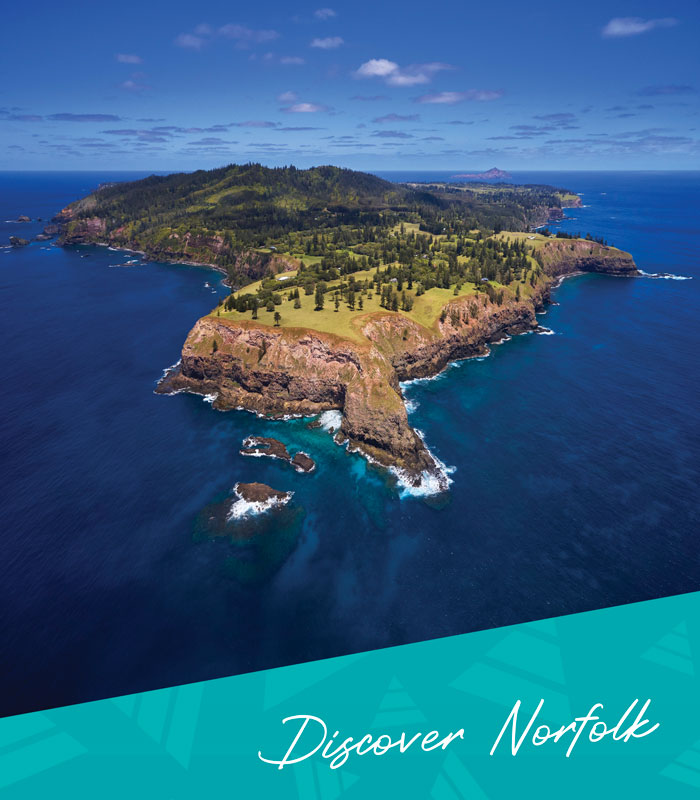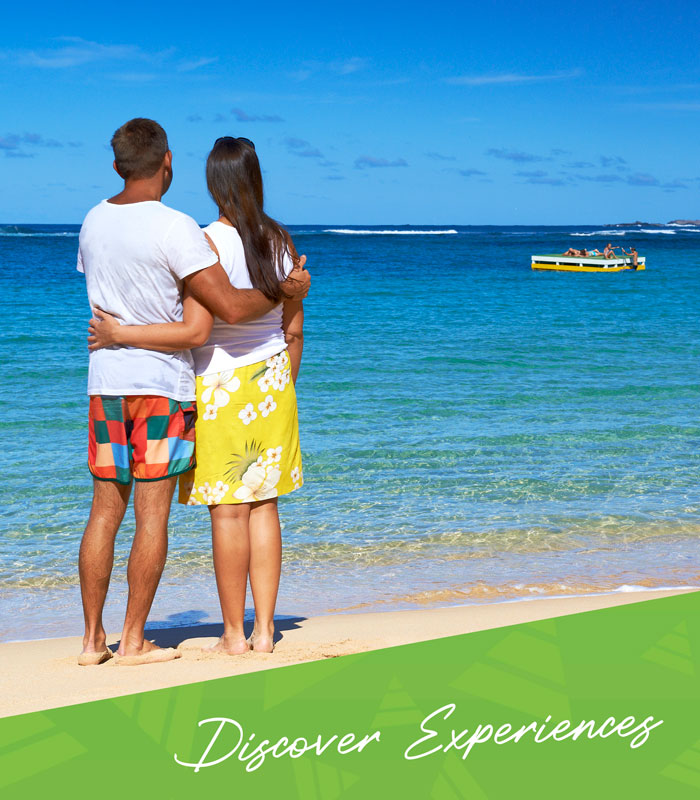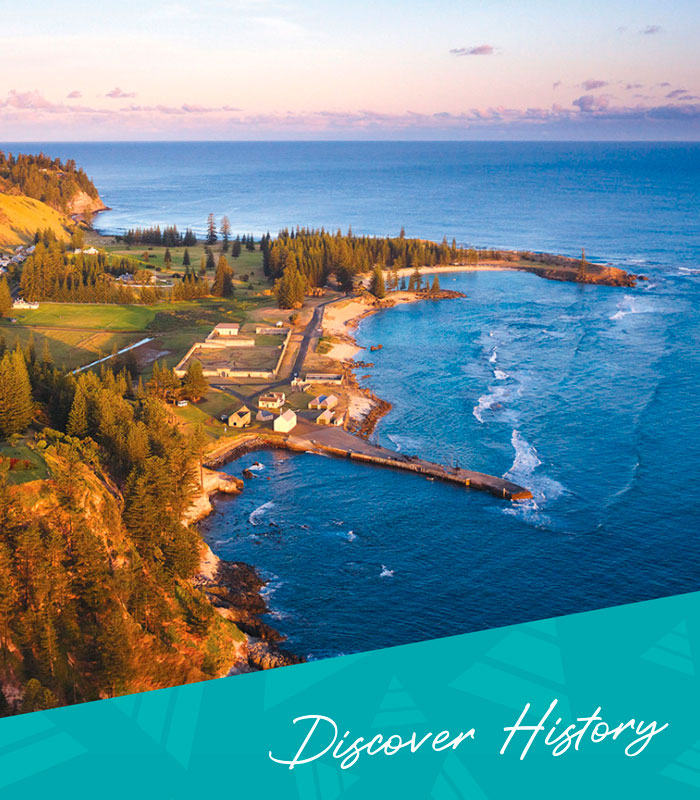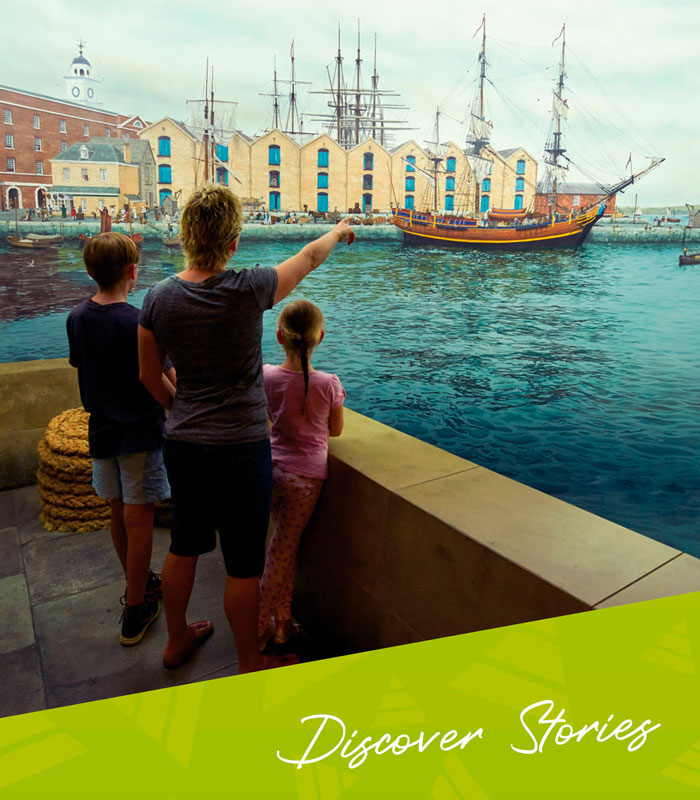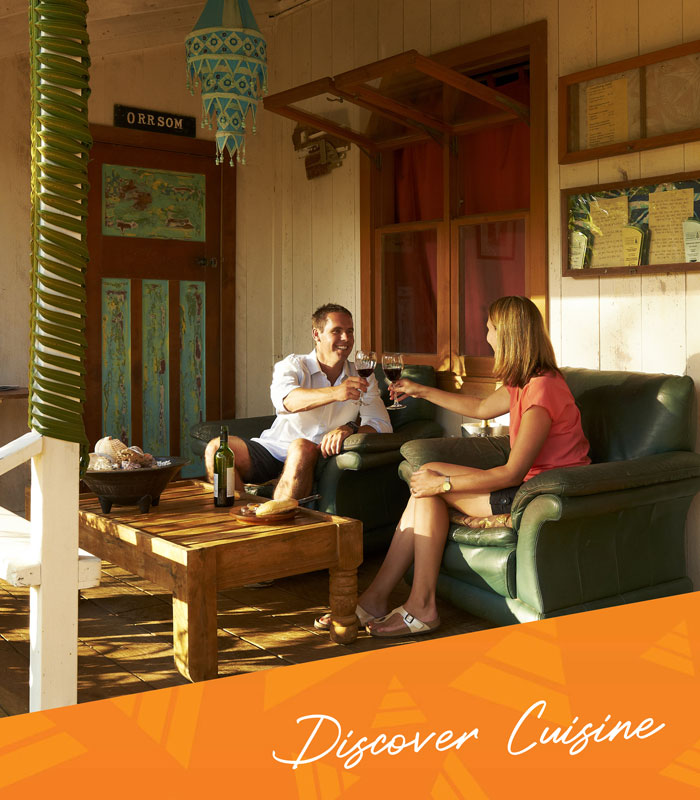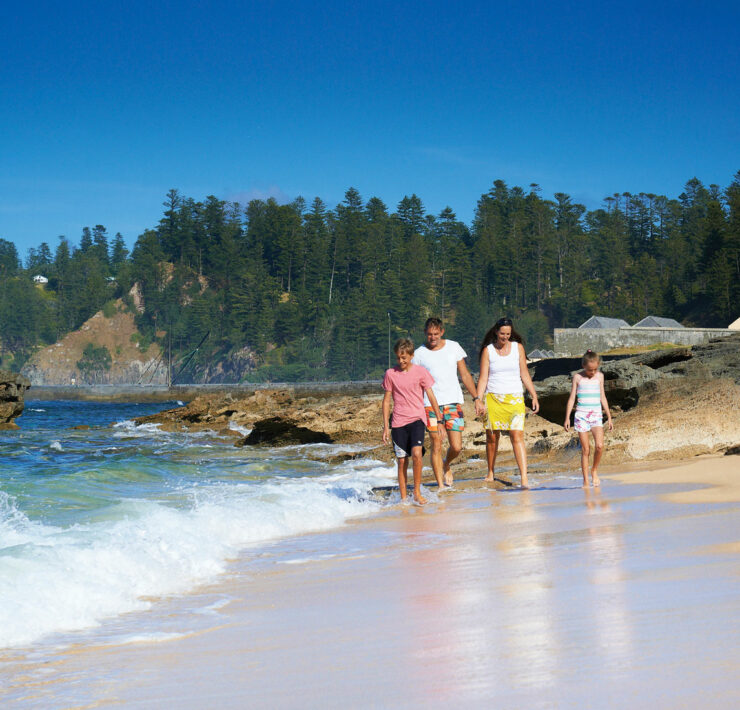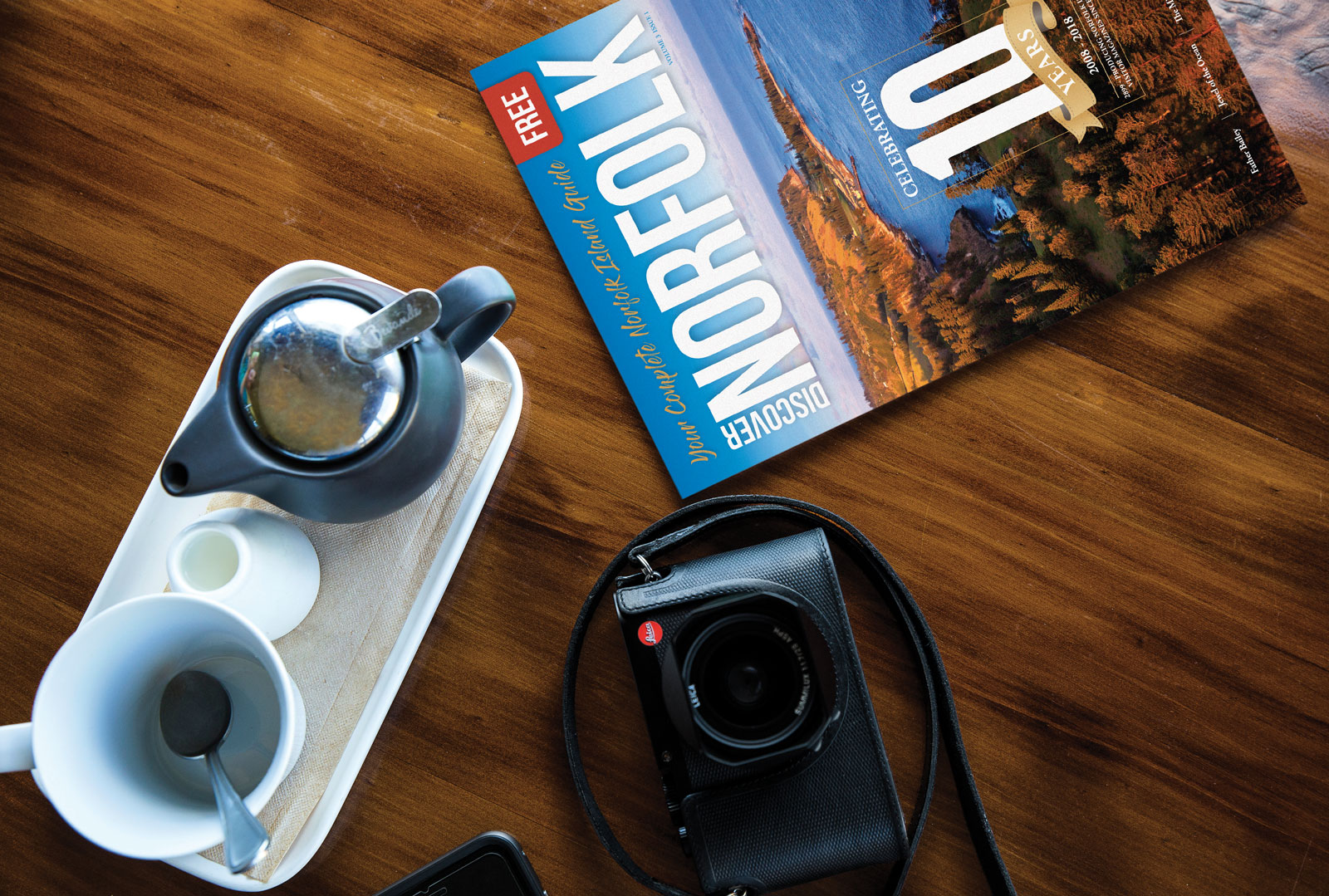
On Norfolk, family and friends regularly gather to celebrate special days such as birthdays, Christmas, Thanksgiving or for no particular reason. Gatherings will always involve food, either at an outdoor picnic or, if the weather is looking uncertain, at a family home. Using whatever is seasonally available from the garden, dishes are cooked and brought along to be placed on the table. Our traditional recipes are simple to make and are truly delicious. You can find fish, meat, chicken, pilhi, rice, anna, fritters, vegetable dishes, an assortment of pies, breads, desserts and fresh seasonal fruits at the table. Norfolk Islanders love sweet delicacies, and these are mixed appreciatively with meats and vegetables on a single plate that is regularly replenished. The catch phrase ‘have some more, have some more’ is standard banter, so if you attend an island banquet make sure you eat your fill. Eat until you “se moosa buss” (you are near bursting), is a true sign of sincere Norfolk hospitality!
Most island homes host their own garden vegetable plot with fruit trees and bananas in the surrounds of the yard. Cooking on Norfolk is reliant upon produce in season or that which we can find stocked on the shelves in Foodland. (Does anyone know when the ship is due?) Shelves can be near empty before the next cargo ship arrives, so the Norfolk cook is a creative cook!
The use of the banana demonstrates the many ways we prepare and cook “plun” from green too ripe yellow, too over-ripe and almost black! The word ‘plun’ for banana originated on Pitcairn Island as an abbreviated form of plantain. The two main varieties of banana are the fruit or sweet banana and the plantain. The fruit banana is eaten raw when it turns yellow and develops a succulent sweetness with a soft, smooth, creamy yet firm pulp. The plantain is a cooking banana that has a lower water content, making it drier and starchier than a fruit banana. Surprisingly, 80% of the bananas grown throughout the world are of the plantain variety.
BREAKOUT BOX – NUTRITION
Bananas are an excellent source of potassium, vitamin B6 and vitamin C. Research has found that two or three bananas a day are beneficial in treating children with celiac disease (intolerance to grains that contain gluten such as wheat, rye, oats and barley). Practitioners of Chinese medicine recommend the banana for lowering blood pressure and relieving constipation. Traditional Asian medical practitioners also recommend bananas to treat hypertension and help prevent gastric ulcers. Bananas contain three natural sugars: sucrose, fructose and glucose. These sugars in ripe bananas take 45–60 minutes to be absorbed by the body, giving a sustained release of energy. Tennis players at Wimbledon consume 90 kg of bananas per day during the Open Championship fortnight! A tip for the festive season hangover is to drink water that has had a banana peel boiled in it!
BREAKOUT BOX – STORAGE
Never store unripe bananas in the refrigerator as the cold interferes with the ripening process. Most fruits give off an ethylene gas as they ripen and because bananas have a higher concentration, they ripen very quickly. The most effective way of ripening bananas is at room temperature. If you have bought green bananas and you want to accelerate ripening, place them into a paper bag. Once ripe, bananas can be refrigerated for up to two weeks. (Note that their skins will turn black.) You can peel and cut bananas into chunks and place them in a container in the freezer. This is perfect for adding to those breakfast smoothies or to soothing a restless teething child by cooling gums and tasting delicious!
BREAKOUT BOX – ON PITCAIRN ISLAND
On Pitcairn Island our foremothers prepared food with what few utensils were brought with them on the Bounty. Since these were irreplaceable, they became precious possessions to be handled with tender loving care. In the early days, measurements were achieved by look and feel: a bit of this, a bit of that. Traditionally, grating involved the use of a “yollo”. A few of these small slabs of lava rock were brought from Pitcairn Island in 1856 to Norfolk Island with the arrival of our descendants, the Pitcairners. The yollo is considered one of the most prized and treasured possessions in a Norfolk family home. These small slabs are approximately 35cm long and 20cm wide, with diamond-shaped grooves hand-hewn (heavily pitted) into the surface.
To use, the yollo is first dampened with water, and then sweet potatoes and yams (for a variety of pilhi’s) or green bananas (for dumplings and fritters) are grated directly onto the yolo using a circular motion. Some islanders adamantly claim that a pilhi or green plun fritters are ‘sweetest’ when grated on a traditional yollo (compared with the tin grater most of us have on hand in the pantry).
Image Credit: Robin Nisbet
www.robinnisbet.com
____
Article content disclaimer: Article first published in 2899 Magazine V1 Iss1, 2008. Please note that details of specific travel, accommodation and touring options may be outdated. References to people, places and businesses, including operating days and times may be have changed. References to Government structure and Government businesses/entities may no longer be applicable. Please check directly with businesses and/or Government websites directly rather than relying on any information contained in this article before you make travel arrangements.


